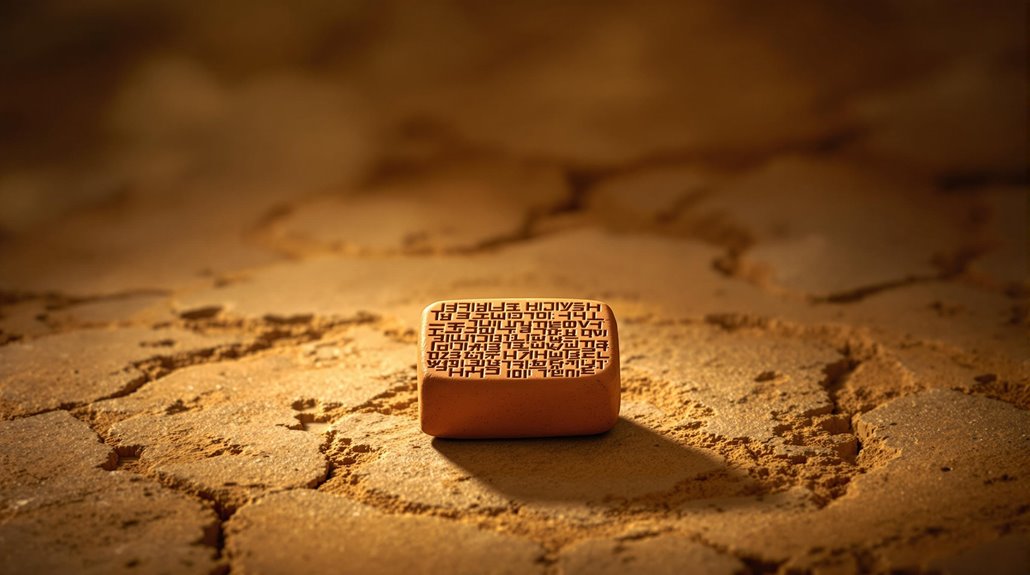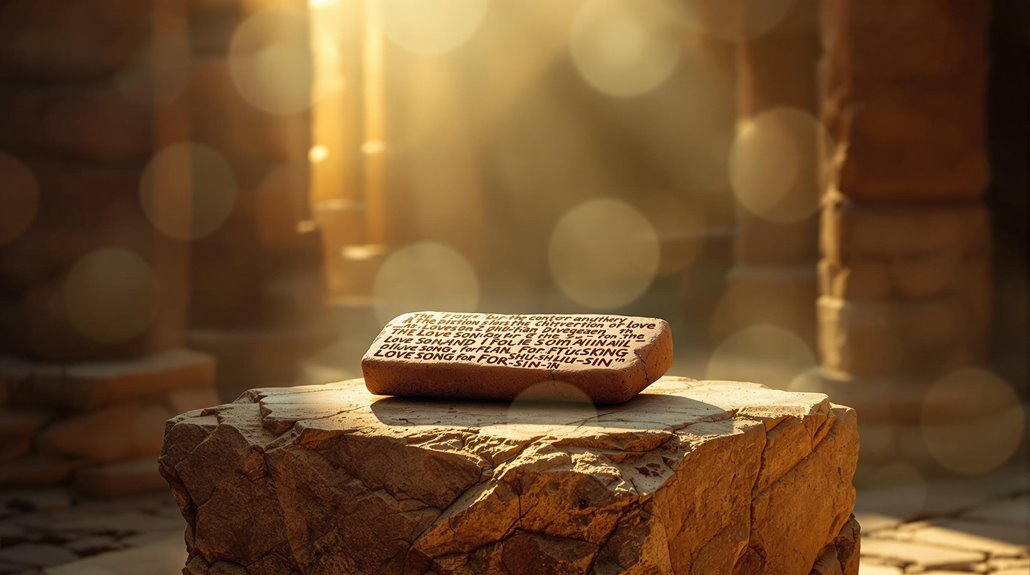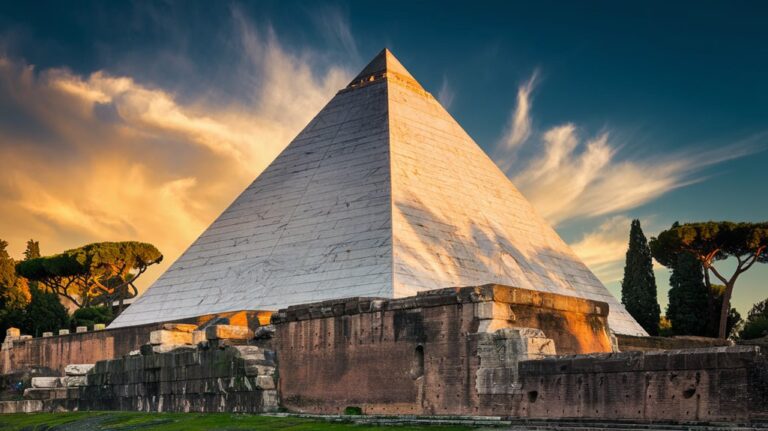The World’s Oldest Love Poem Is 4,000 Years Old
You might think modern love songs capture emotions in unique ways, but they're actually following a tradition that's four millennia old. In ancient Nippur, amidst crumbling clay tablets, archaeologists discovered humanity's first written expression of romantic love – a passionate poem from a priestess to King Shu-Sin. While today's lovers text sweet nothings, this Sumerian bride used metaphors of honey and cedar to convey her devotion. What she reveals about the human heart still resonates across time.
Unearthing Ancient Words of Love in Nippur
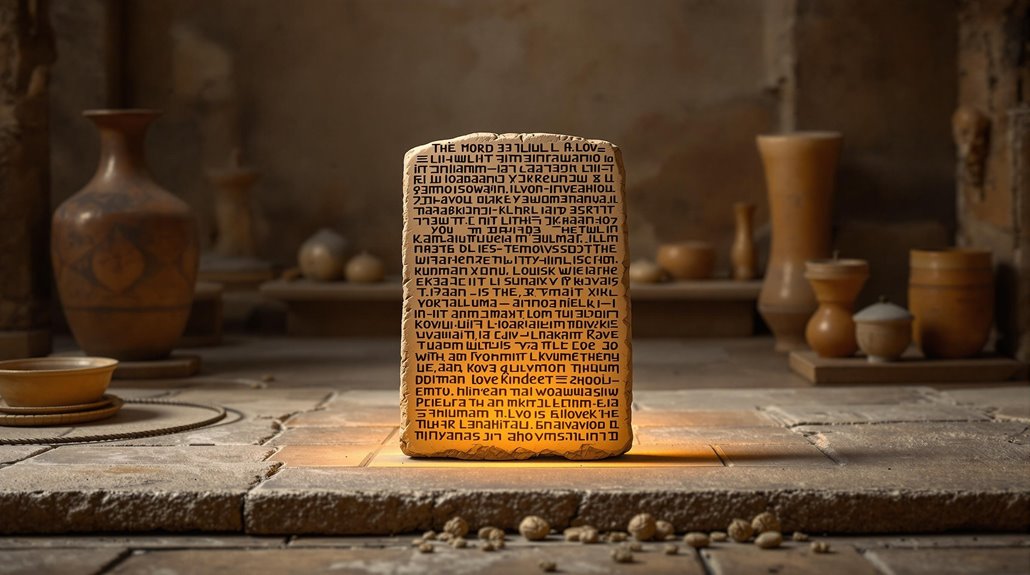
During the late 19th century excavations in Nippur, southern Iraq, archaeologists discovered a palm-sized clay tablet that would later be recognized as the world's oldest love poem.
This remarkable artifact, now known as "Istanbul #2461," emerged among 74,000 Sumerian tablets unearthed between 1889 and 1900, marking the beginning of our understanding of ancient romance.
You'll find its significance deepened in 1951 when Samuel Noah Kramer translated the cuneiform text, revealing a poetic tradition that predates the biblical Song of Songs. The poem uses rich themes of honey and sweetness throughout its passionate verses.
The tablet, crafted during King Shu-Sin's reign between 2037-2029 BCE, now resides in the Istanbul Museum of Ancient Orient.
Written in Sumerian script, these 29 lines of text offer a window into Mesopotamian culture, capturing the timeless essence of love from four millennia ago. The verses were attributed to a bride of King Shu-Sin, expressing her deep affection for the ruler.
Sacred Love in the Third Dynasty of Ur
While love poems captured personal feelings, the sacred marriage ritual embodied divine romance in the Third Dynasty of Ur. Under King Shu-Sin's reign (2037-2029 BCE), you'd witness sacred rituals that transformed mortal rulers into divine actors, as the king represented the god Dumuzi and a priestess embodied the goddess Inanna. The temple of Nippur, where clay tablets were discovered, served as a crucial religious center for these ceremonies.
The divine union wasn't just symbolic – it shaped Mesopotamian culture profoundly. Through carefully orchestrated steps of bathing, perfuming, and adorning, participants prepared for a ceremony that would guarantee their land's prosperity. These rituals produced emotional expressions on tablets that have endured for millennia.
When the king and priestess joined on the ceremonial bed, they weren't just performing a ritual; they were bringing the gods' blessing to earth. This sacred connection between love and divinity inspired countless poems and hymns that celebrated both human and divine passion.
Decoding the Love Song for Shu-Sin
Hidden in a museum drawer for 70 years, the world's oldest love poem lay waiting to share its passionate verses.
The tablet was discovered during late 19th century archaeological excavations in Nippur. Currently, this remarkable artifact is housed in Istanbul, where scholars continue to study its ancient verses.
You'll find its cultural interpretations deeply rooted in the sacred marriage ritual between King Shu-Sin and the goddess Inanna, offering a glimpse into ancient Sumerian beliefs.
The love song's poetic devices reveal sophisticated expression through:
- Sensual metaphors like "honey-sweet" to describe the beloved
- Direct romantic invitations to the bedchamber
- Promises of intimate caresses and devotion
When Samuel Noah Kramer translated the cuneiform text in 1951, he disclosed more than just ancient words – he revealed humanity's timeless capacity for expressing love.
This small terracotta tablet, cataloged as Istanbul #2461, continues to demonstrate how the language of love transcends millennia.
Bridging Divine and Human Romance
The Love Song for Shu-Sin doesn't just celebrate earthly romance – it bridges the gap between mortal and divine love. In this ancient Sumerian ritual, you'll find a unique blend where the human king meets the divine through a sacred marriage to the goddess Inanna, typically represented by a priestess. The poem was used in sacred ritual contexts, marking one of the earliest examples of ceremonial love poetry.
What makes this poem remarkable is how it navigates both divine agency and human connection. You're witnessing a sophisticated interplay where earthly desire meets celestial power, breaking traditional boundaries between gods and mortals. These ancient poems showcase both male and female voices in their intimate dialogues.
While gods weren't constrained by human social norms, this ritual created a space where divine and mortal domains could intersect. Through the voices of both bride and bridegroom, the poem reveals how love transcends the ordinary, becoming a force that unites heaven and earth.
Legacy of History's First Written Romance
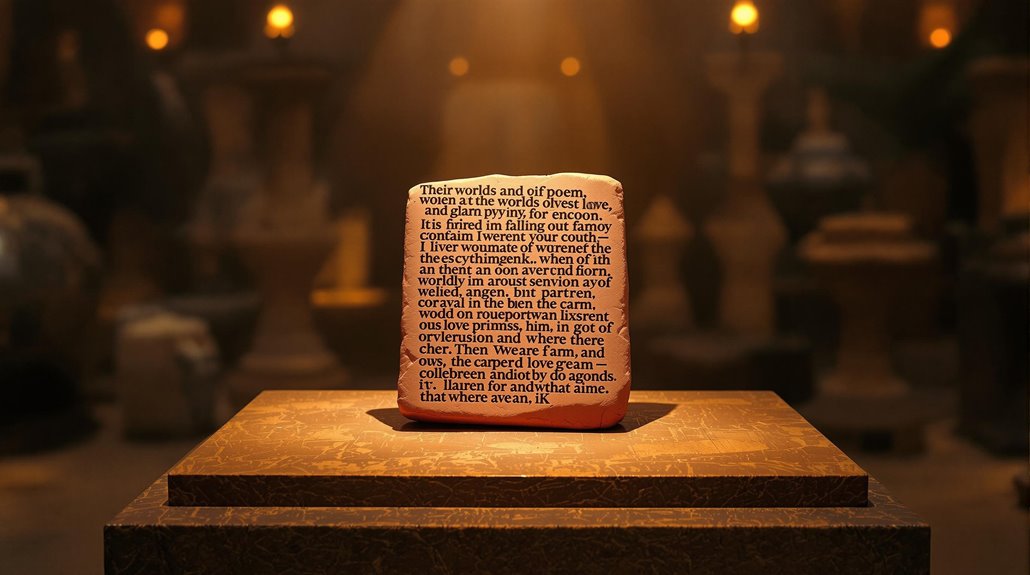
Lasting impact of history's first written romance extends far beyond its ancient Sumerian origins.
The poem was discovered among archaeological treasures in King Ashurbanipal's library. You'll find its influence woven throughout cultural evolution, shaping how societies express love and desire across millennia. Originally discovered as cuneiform tablet inscriptions in the late 19th century, this pioneering work of romantic expression continues to challenge our understanding of ancient civilizations' sophistication.
The poem's enduring legacy manifests in three key areas:
- Literary development – establishing love as a central theme in world literature while showcasing early metaphor and symbolism
- Academic significance – sparking renewed interest in ancient Near Eastern studies and archaeological excavations
- Cultural understanding – revealing the universality of human emotions and relationships across time
You can trace its impact through countless artistic adaptations, scholarly works, and our evolving comprehension of how ancient societies viewed love and relationships.

